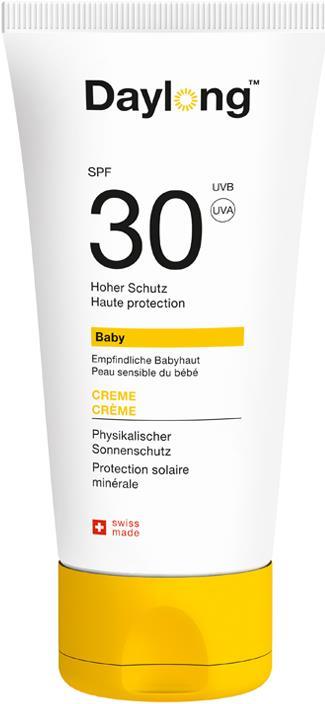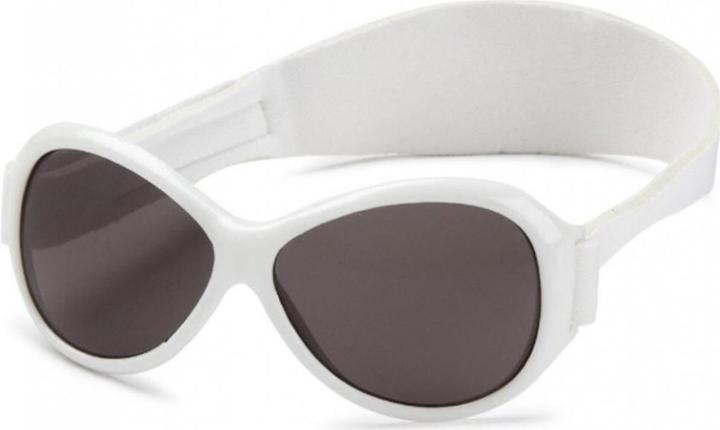

Clothes and shade are the best sun protection
It's the time for splashing and frolicking at the lake, splashing and swimming in the pool. However, children's skin reacts more sensitively to the sun than adult skin. That's why there are a few things to bear in mind in summer.
Switzerland is the country with the highest skin cancer rate in the world, after New Zealand and Australia. One reason for this is thought to be that the disease is recognised and treated earlier than elsewhere; this is also supported by the fact that relatively few people die from skin cancer despite the high number of sufferers. However, the leisure and holiday behaviour of the Swiss, in which spending time in the sun plays a major role, probably also contributes to the explanation. We spend a lot of time outdoors and can generally afford regular beach holidays more often than residents of other countries. Children very rarely get skin cancer - but sunburns at a young age increase the risk of developing the disease later as an adult. Children's skin is thinner and lighter in colour than that of adults, so there are a few things to bear in mind when out in the sun:
Clothing
Good sun protection primarily means suitable clothing that covers as much skin as possible, especially the shoulders and neck; a sun hat with a wide brim is also a must. Dense fabric is better than loose fabric, artificial fibres protect more than natural fibres, dark colours are better than light ones, and dry clothes are less permeable to light than wet or stretched ones. If the child spends time by the water, textiles with UV protection are recommended, as the Cancer League writes in its brochure on the topic of sun protection.

Sun cream (chemical)
Sunscreens for children should have a sun protection factor of at least 30 and UVA protection and must be reapplied at regular intervals, including waterproof products. However, it is not advisable to simply apply sun cream to your children every day in summer, even if it's just a short walk to the supermarket. It should not be forgotten that the protection provided by most sun creams is based on chemical active ingredients and their use can, in rare cases, have undesirable consequences such as allergies or hormonal changes. However, both the Cancer League and the Federal Office of Public Health clearly state that the benefits of using sun creams outweigh any disadvantages. To minimise the risk of allergic reactions, it is advisable to use products without fragrances such as perfume or essential oils and without colourants and preservatives.

Laboratoires de Biarritz Alga Maris Children SPF 50+
Suntan cream, SPF 50+, 100 ml, 161 g
Sun cream (physical)
In addition to sunscreens with organic UV filters, there are also mineral-based products. According to the Cancer League, these offer comparable protection to conventional sun creams with chemical active ingredients.
Sunglasses
Even small children should wear sunglasses. Their eyes are more sensitive than those of adults and allow more sunlight to reach the retina. Eyes need to be particularly well protected in water and sand, as the surface reflects the sunlight strongly. If the little ones don't want to wear sunglasses, a sun hat with a wide brim will also offer some protection.
Time of day
In summer, but also on beautiful spring and autumn days, children (and adults) should avoid direct sunlight between 11 am and 3 pm. According to the Cancer League in its fact sheet on sun protection for children, almost two thirds of daily UV radiation reaches the earth's surface during this period. As a general rule, it is particularly important to stay in the shade at midday.
Babies
Until the age of one, small children should not be exposed to direct sunlight. If exposure to the sun is unavoidable, it is also important to protect babies' skin with suitable clothing and a sun hat and to use a sunscreen with a sun protection factor of at least 30 and UVA protection for exposed areas such as the face.
More recommendations for children from the Cancer League.
More on the topic
A passionate journalist and mother of two sons who moved from Zurich to Lisbon with her husband in 2014. Does her writing in cafés and appreciates that life has been treating her well in general. <br><a href="http://uemityoker.wordpress.com/" target="_blank">uemityoker.wordpress.com</a>
Interesting facts about products, behind-the-scenes looks at manufacturers and deep-dives on interesting people.
Show all


